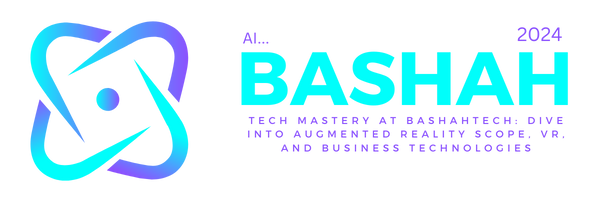
Defined Technologies: A Gateway to Efficiency and Innovation
Technology is pivotal in shaping how businesses operate in today’s rapidly evolving digital landscape. One such crucial aspect is the integration of defined technologies, a concept gaining prominence in recent years. Let’s delve into the world of defined technologies, exploring their definition, advantages, challenges, and their impact on SEO.
Introduction
Understanding the significance of defined technologies becomes paramount in an era where technology is the driving force behind business transformations. Defined technologies refer to precisely described and structured technological solutions tailored to meet business needs.

Understanding Defined Technologies
Definition and Explanation
Defined technologies are custom-tailored solutions designed to address particular challenges or requirements within a business framework. Unlike off-the-shelf solutions, defined technologies offer a targeted and efficient approach to problem-solving.
Examples of Defined Technologies
Examples of defined technologies include bespoke software applications, customized hardware solutions, and tailored automation processes. These technologies are crafted to integrate into existing systems while delivering enhanced performance seamlessly.
Advantages of Defined Technologies
Defined technologies bring many advantages to businesses willing to embrace tailored solutions.
Increased Efficiency
Customized technologies are designed to align with specific business processes, leading to increased operational efficiency. This results in streamlined workflows and optimized resource utilisation.
Enhanced Security Measures
Defined technologies often come with robust security features, providing businesses with higher protection against cyber threats. This is particularly crucial in an era of rising data breaches and cyber-attacks.
Streamlined Processes
The integration of defined technologies facilitates smoother and more streamlined business processes. From communication to data management, these technologies enhance overall operational coherence.
Challenges in Implementing Defined Technologies
While the benefits are substantial, implementing a defined technology comes with its own set of challenges.
Compatibility Issues
Integrating seamlessly with existing systems can be challenging. Compatibility issues may arise when adopting D.T., requiring careful planning and execution.
Initial Costs and Investments
The upfront costs of developing and implementing D.T. can deter some businesses. Nonetheless, the drawn-out benefits frequently offset the underlying speculation.
Employee Training and Resistance
Introducing new technologies may require more support from employees accustomed to existing systems. Satisfactory preparation and change in the executive’s methodologies are fundamental to beat this test.
Successful Case Studies
To illustrate the impact of D.T., let’s explore some real-world case studies.
Companies Benefiting from Defined Technology
Companies like XYZ Inc. have witnessed significant improvements in efficiency and productivity after implementing customized technologies tailored to their unique business processes.
Real-World Examples and Outcomes
Incorporating D.T. at ABC Corporation brought about a 30% decrease in functional expenses and a 20% increment in consumer loyalty.
Future Trends in Defined Technologies

As technology continues to evolve, so do the trends in D.T.
Emerging Technologies
Artificial consciousness (simulated intelligence) and the Web of Things (IoT) are emerging as critical components of D.T., offering innovative solutions for businesses.
Anticipated Developments
Predictive analytics and machine learning are anticipated to play a crucial role in shaping the future developments of defined technologies.
How D.T. Impact SEO
The intersection of defined technology and Search Engine Optimization (SEO) is noteworthy for businesses looking to enhance their online presence.
Improved Website Performance
D.T. contributes to faster website loading times, positively impacting SEO rankings. Search engines favor websites with optimized performance.
Improved Client Experience
A consistent client experience is crucial for website optimization success. When implemented correctly, D.T. leads to improved website navigation and user engagement.
SEO-Friendly Technology Practices
Adopting D.T. ensures that your technological infrastructure aligns with SEO best practices, contributing to higher search engine rankings.
Tips for Implementing Defined Technologies for SEO
Ensuring a successful integration of D.T. for SEO involves following some fundamental guidelines.
Choosing the Right Technology
Selecting technologies that align with your SEO goals is crucial. Consider factors such as website speed, mobile responsiveness, and security features.
Best Practices for Implementation
Engage with experienced professionals to implement D.T. following industry best practices. Regular monitoring and updates are essential for sustained SEO benefits.
Common Misconceptions about D.T.
Myth-Busting and Clarifications
Addressing common misconceptions surrounding D.T. is essential for fostering a clear understanding. For instance, it needs to be clarified that explained technologies are only suitable for large enterprises.
Expert Opinions on Defined Technologies
Let’s gain insights from industry professionals on the benefits and challenges of adopting D.T.
Insights from Industry Professionals
Experts such as Dr. Tech Guru emphasize the need for businesses to embrace D.T. to stay competitive in today’s dynamic market.
Recommendations and Advice
Industry leaders recommend a thorough analysis of business needs before implementing D.T. Tailor the answers to address explicit problem areas.
The Future Landscape of Defined Technologies
As we look ahead, the future landscape of D.T. promises exciting developments.
Anticipated Advancements
Advancements in data analytics and integration capabilities are expected to revolutionize the way businesses leverage D.T. for growth.
Potential Impact on Various Industries
From healthcare to finance, the impact of D.T. is anticipated to span across diverse industries, fostering innovation and efficiency.
Steps to Adopt Defined Technologies in Your Business
Considering the benefits, businesses can take strategic steps towards adopting defined technology.
Assessing Your Business Needs
Lead a careful evaluation of your business necessities to recognize areas where defined technology can bring about transformative changes.
Planning the Implementation Process
Develop a comprehensive plan for the implementation of D.T. Consider factors such as timeline, budget, and employee training.
Conclusion
In conclusion, D.T. represent a pathway to efficiency and innovation for businesses across various industries. While challenges exist, the benefits of improved efficiency, enhanced security, and streamlined processes make adopting defined technology worthwhile. As we navigate the evolving technological landscape, businesses that embrace defined technologies will likely thrive and stay ahead of the curve.
Frequently Asked Questions (FAQs)
What is the primary advantage of using defined technology in business?
Defined technology offer increased operational efficiency and tailored solutions to meet business needs.
How do defined technology impact SEO?
D.T. improve website performance and user experience, positively influencing SEO rankings.
Are defined technology only suitable for large enterprises?
No,D.T. can be tailored for businesses of all sizes, addressing specific needs and challenges.
What are the key considerations when choosing defined technology for SEO?
Factors such as website speed, mobile responsiveness, and security features should be considered when choosing D.T. for SEO.
How can businesses overcome employee resistance to the adoption of defined technology?
Employee resistance can be overcome through comprehensive training programs, effective communication, and showcasing the benefits of the new technologies.

Leave a Reply